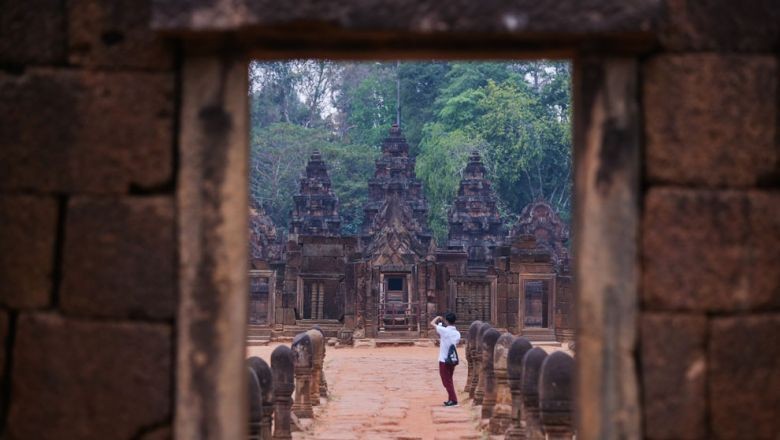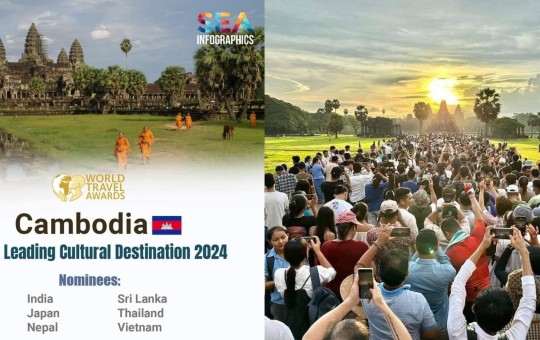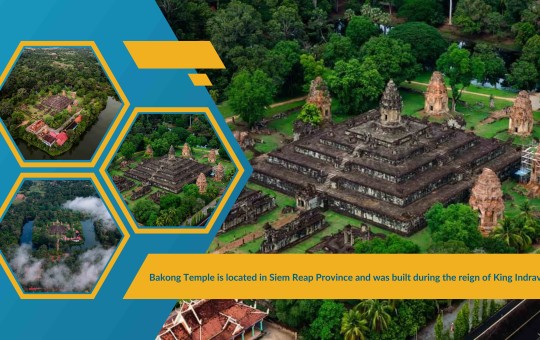
Tourism sector lauds upcoming trial of Angkor tour circuits
Tourism industry players have praised the tour circuits for Angkor Wat and Banteay Srei temples that APSARA National Authority (ANA) is preparing to trial from August 1 as a way to improve travel experiences of both local and foreign visitors.
In a July 20 notice, ANA said the tours will offer a range of options to cater to diverse interests and schedules, taking visitors through key sections of the two temples.
It said three distinct circuits will allow visitors to explore the magnificence of Angkor Wat: a two-hour “Tourist Destination” route, a two-and-a-half-hour “Religious Destination” tour, and a longer three-hour “Historical Destination” expedition.
At Banteay Srei, also known as the citadel of women, there will be two distinct tours available, lasting either 80 or 100 minutes, it added.
Promising a viewing experience like never before, the statement noted that infrastructure modifications such as new stairs, railings, directional signs and informative boards that describe the sculptures, carvings and iconography have been set up in preparation for the circuits.
ANA spokesman Long Kosal confirmed to The Post on July 26 that authorities plan to launch similar tour circuits at other locations if the trial is successful.
The circuits aim to smooth the flow of visitors; foster a more comfortable, safe and orderly atmosphere; and keep interested individuals well-informed with the latest related news, he said, adding that the project is anticipated to draw more visitors to Angkor Wat and other temples across the Kingdom.
“The [ANA] notice is not intended to forbid guests from going elsewhere; rather, we just want to provide them with a suggestion that might offer a pleasurable experience while also alleviating traffic,” he said.
Pacific Asia Travel Association Cambodia Chapter chairman Thourn Sinan commented that the tour circuits are designed to simplify temple visits while also making it easier to keep both the guests and the structures safe.
He emphasised that information about the temples’ visiting hours and dress requirements is readily available.
Angkor Enterprise, the state-owned enterprise in charge of Angkor income management, reported that a total of 385,769 standard tickets for Angkor Archaeological Park were sold to foreign visitors in the first six months of 2023, amounting to $17.877 million, available in one-day, three-day and seven-day passes.
This represents 543.13 per cent and 638.71 per cent year-on-year increases in terms of the quantity and value of tickets sold, but 71.57 per cent and 70.92 per cent drops from the 1.357 million tickets worth $61.472 million booked in the same period of record-breaking 2018.
Last month alone, 41,012 of these tickets were sold for $1.812 million, up 188.74 per cent and up 221.40 per cent in terms of number and value compared to June 2022, but down 10.37 per cent and down 10.96 per cent against May 2023, as well as down 72.80 per cent and down 72.04 per cent versus the 150,773 tickets worth $6.479 million registered in June 2018.
Cambodians do not pay any of these entrance fees.
Meanwhile, the Ministry of Tourism revealed that the Kingdom welcomed 2.580 million international visitors in the first half of the year, the equivalent of 77.28 per cent of the record 3.338 million logged in the same time of 2019.
Tourism minister Thong Khon late last month reaffirmed his ministry’s expectation that the total for the entire year will top 4.5 million, which would be 68.07 per cent of the 6.611 million tallied in 2019.
Similarly, in a recent report on the Kingdom’s tourism plans through to 2024, ministry permanent secretary of state Tith Chantha revealed that the government anticipates Cambodians to make 16 million domestic tourist trips this year. That number closed May at 10.043 million, putting it well on target to achieve that goal.
According to the ministry, domestic tourist trips by locals came in at 13.934 million last year – equivalent to a weekly average of 273,986 – outstripping 2019’s 11.320 million by 23.10 per cent.
A visitor in the context of these statistics is a person travelling to the Kingdom, “staying at least overnight and not exceeding a specific period for leisure, recreation, business and other legal tourism purposes; and not relevant to the purpose of permanent residence or any remunerated activities”, as defined by the ministry.




